Beneath / Beyond
Read the text | Diaporama | Back to gallery
Set of 21 silver color photographs in medium format (120 film size).
Sizes and process:
H 34 X L 34 inches and H 34 X L 58 inches.
Giclée process on Hahnemühle PhotoRag 308g Fine Art paper mounted on museum aluminum Dibond, fitted with an aluminium chassis.
Limited edition of 5.
Price H 34 X L 34 inches: € 3,300 incl. More information.
Price H 34 X L 58 inches : € 3,900 incl. More information.
H 12 X L 12 inches and H12X L20 inches, Giclée process on Hahnemühle PhotoRag 308g Fine Art paper mounted on Dibond, American box frame, H 16 X L 16 inches and H 16 X L 24 inches.
Limited edition of 5.
Price H 12 X L 12 inches: € 1,250 incl. More information.
Price H 12 X L 20 inches : € 1,600 incl. More information.
On a pile of work bags close to the water tanks of a boiler room in an industrial building, a young boy is asleep. Later, he waits in the scullery of a communal kitchen, then resumes his somnambulist walk in the basement of the building.
He has no contact with anyone. Neither adults nor children come across this boy. He roams through the corridors of a seemingly abandoned place, between stacked computers, raw concrete, metal structures and rubble. An uncomfortable and cold decor where only neon lights and LEDs guide the barefooted child.
No worries, no sadness, no feelings appear in the boy’s behaviour. He is below things - beneath social life -invisible, ultimately nonexistent on the surface of the earth.
Sometimes he extracts himself from his underlying universe by projecting himself inside wide panoramic landscapes, this time beyond the real world. He falls into marshes, head first, as if diving into another level, he falls asleep on water using his blanket like the leaves of a water lily, or on the mossy part of a sandy desert, constantly estranged from the world.
The child “un-spatializes” himself in both environments. The first, industrial, is dominated by man but man is no longer in charge.The place is forgotten, disaffected. If you analyse this word from its emotional meaning then, inside this space, the boy will be subjected to no emotions, he can wander around without being affected. The second environment, natural and wild, has not been contaminated by humans. Again, without any interaction, the child can feel protected, and so, passing from one world to another, he can get out of dangerous emotional situations.
Mireille Loup talks here about the "raptus (1)" of a child, those departures out of ordinary consciousness, but also of "polytropic" intelligence (from the Greek, polytropos: several changes / multiple laps), this faculty of polymorphic adaptability that gives the ability to make detours, to wander in a positive way and that Homer used to describe Ulysses, “Ulysses polytropos”, a metaphor of the uncatchable octopus with its thousand folds.
In metric geometry, Beneath-Beyond is the name of one of the algorithms used for representing a set of the points composing a polytope (from the Greek, polytropos, it is a polyhedron generally accepted as convex), that is to say, it produces an equivalence of the representations of the sections and facets that are in front, and of others that are located behind. The Irish mathematician Alicia Boole Stott, who coined the term "polytope" in the late of the 19th century, developed her research on the ability to visualize sections of it in a fourth dimension in our three-dimensional universe.
To understand the dimension 4, it is necessary to disregard the world that we can only see, the one in three dimensions, and imagine another one, to which our eyes and senses do not have access, and that considers the dimension of the hidden facets of the polytope, the representation of which differs, depending on its movement in space (X, Y, Z), that is to say at instant T.
In Beneath/Beyond, Mireille Loup shows us how certain mental algorithms can allow a representation of invisible facets by an ability of adaptability that uses the imagination, the "polytropos", beneath and beyond a perceptible reality.
Inspired by remarkable works dealing with isolation such as The Silence by Ingmar Bergman (film, 1963), the literary trilogy His Dark Materials by Philip Pullman and the short story by Jules Supervielle The child of the High Seas, Mireille Loup had already given us images of the wandering of childhood. One remembers this little girl inside magnified landscapes from her series Esquives, created thirteen years ago (2003-2005), of which two photographs have been acquired by the Fond National d’Art Contemporain (French Contemporary Art Fund). In Esquives, accompanied by a novel of the same name, she told us about the isolation of her own childhood, revisited and sublimated. In Beneath / Beyond (2), she invites us into the "polytropic" interiority of her son, who asked her to appear in these images, and conveys again the feeling of being estranged from the world, as if history was endlessly replayed.
When we are children, how can we talk about ourselves when we do not have the words? At least, there are images. For children, drawings. For Mireille Loup, constructed and manipulated photographs used as drawings to express the unspeakable, to highlight what is not seen, without emotion, without drama but in a sanitized aesthetics that can talk to many of us.
Translation: Janine Lajudie.
(1) Psychoanalytical term from the 19th century, a “raptus” is a strong perturbation of consciousness, a powerful force affecting behaviour. Madame Von Breuning often studied the “raptus” of Ludwig von Beethoven, these « departures from ordinary consciousness » that had affected the compositor since adolescence. Many writers speak about these trance-like feelings, these sudden and momentary desertions from the prosaic world.
(2) Artist residency in the Lycée International de Luynes (Aix-en-Provence) with a grant from the Ministry of Culture during Marseille-Provence 2013 for the creation of photographic decors.
Beneath / Beyond
Read the text | Back to gallery
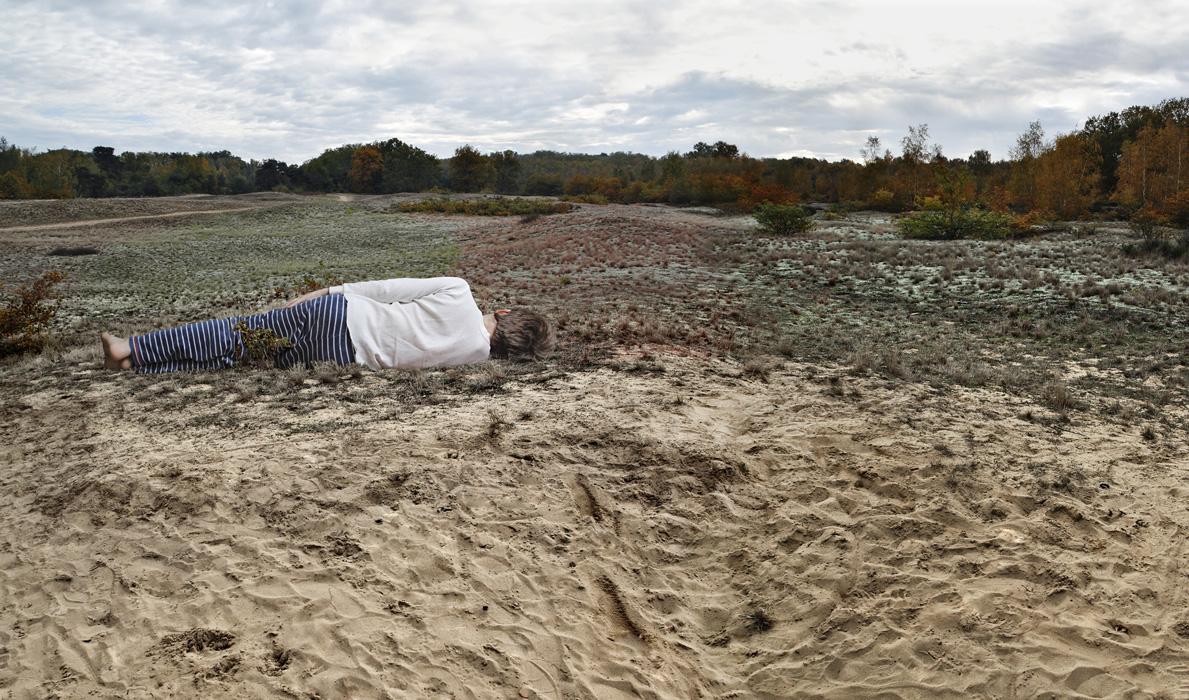
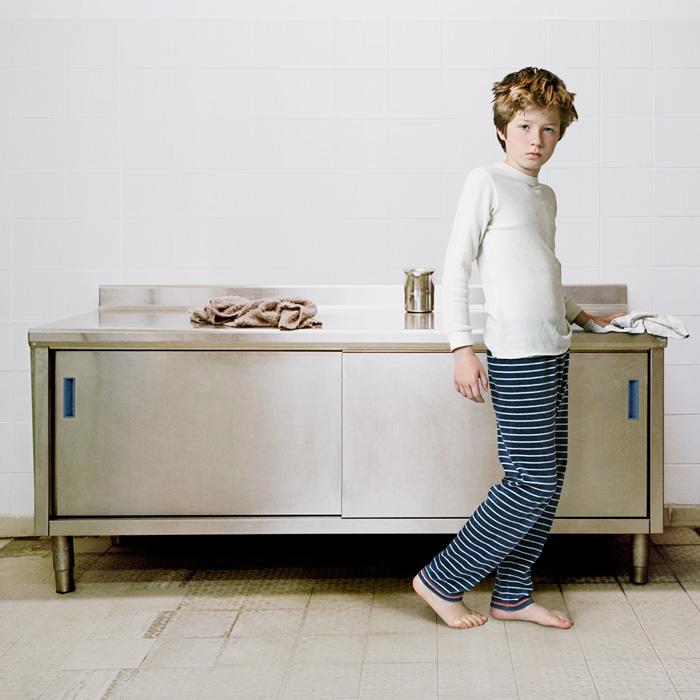

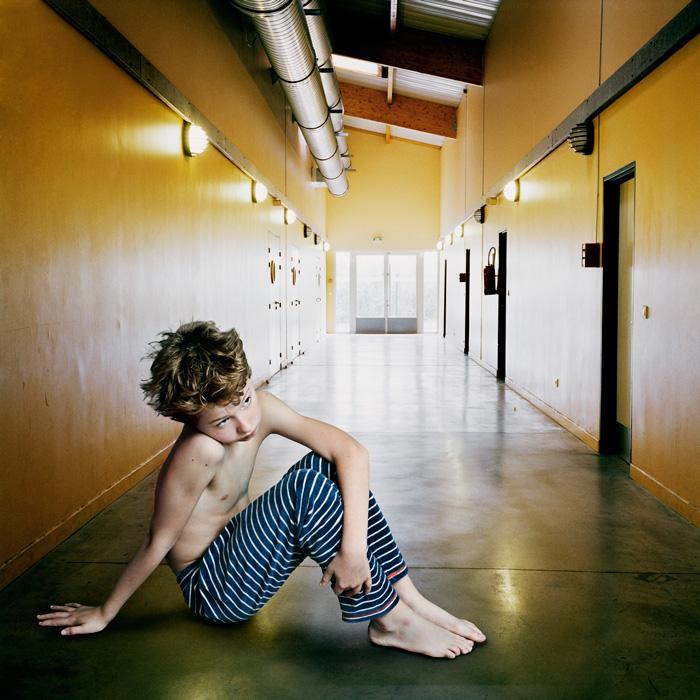
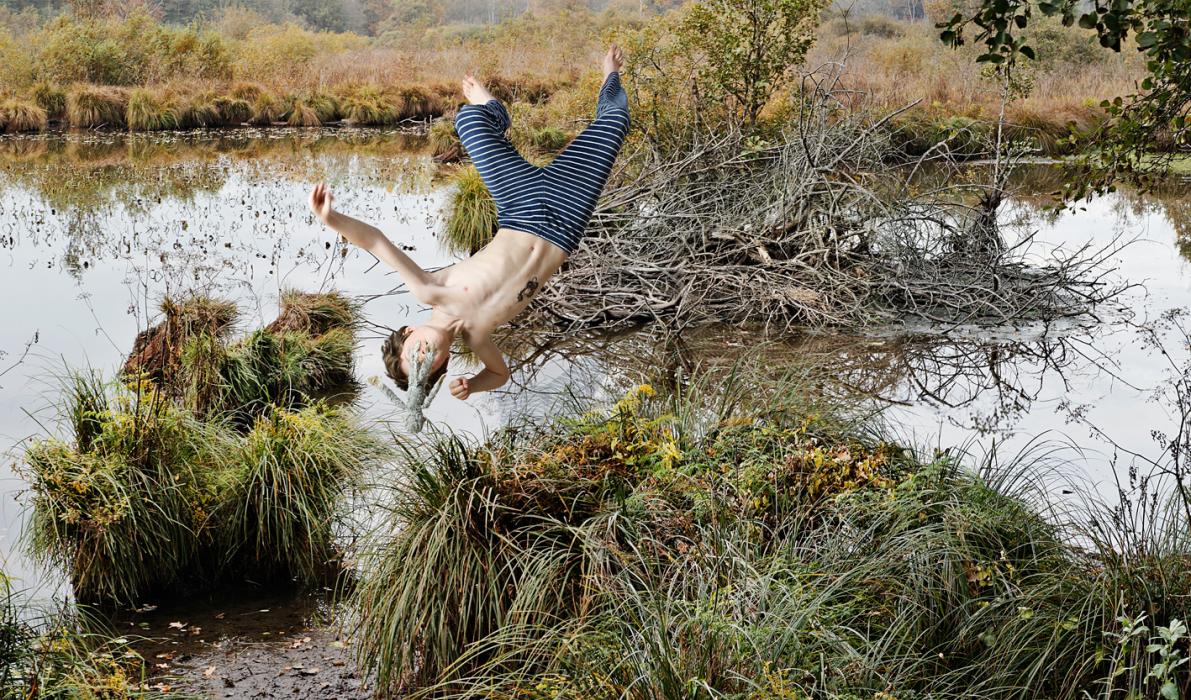
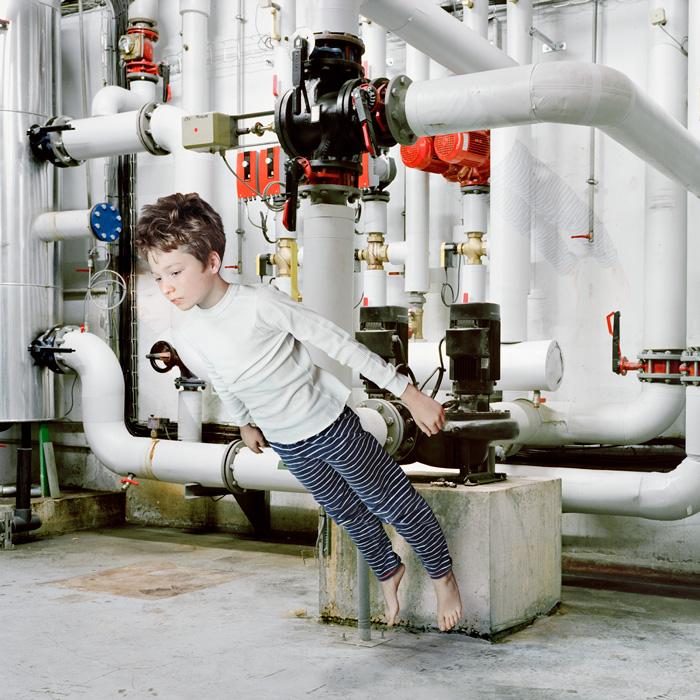
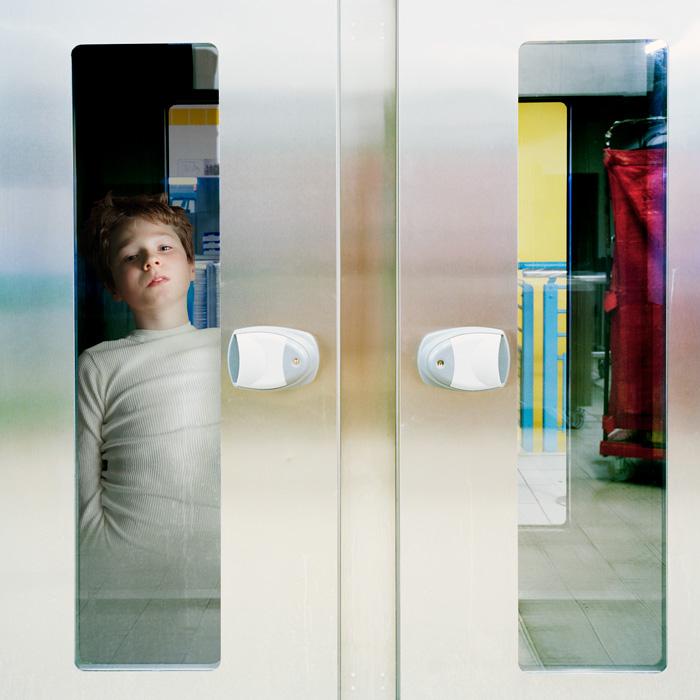
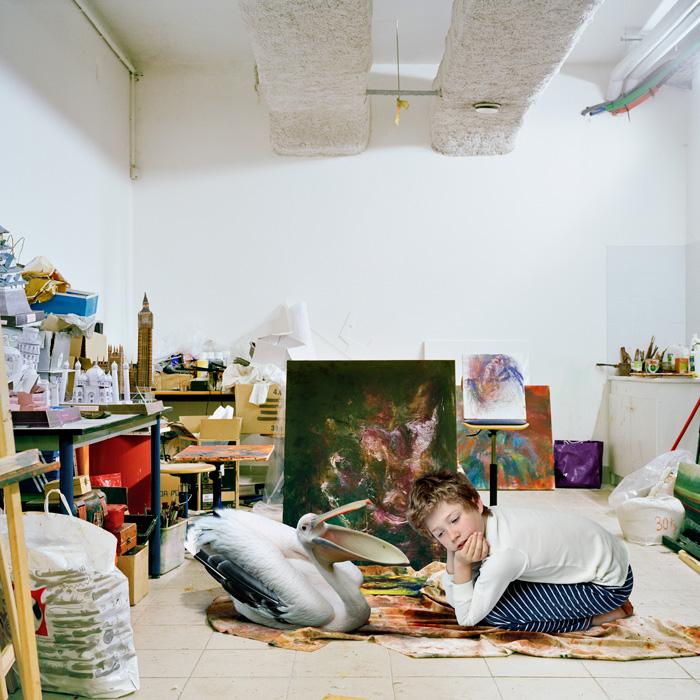
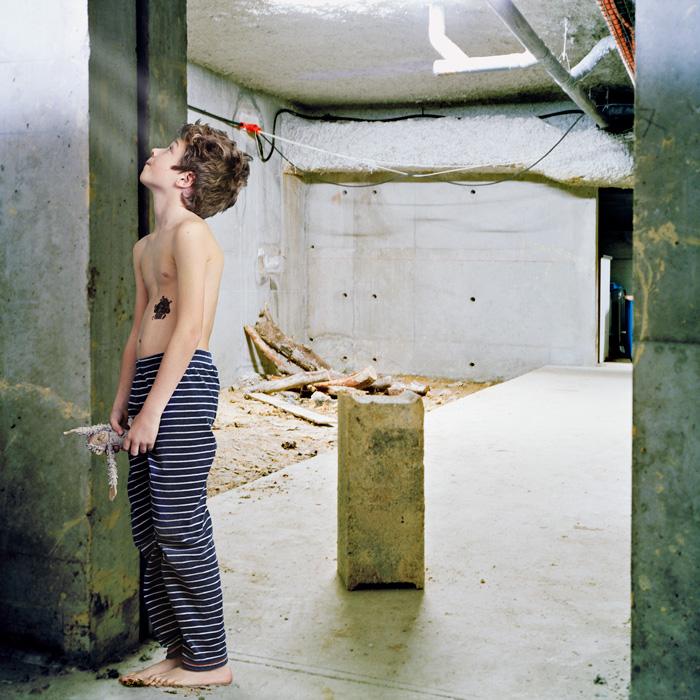
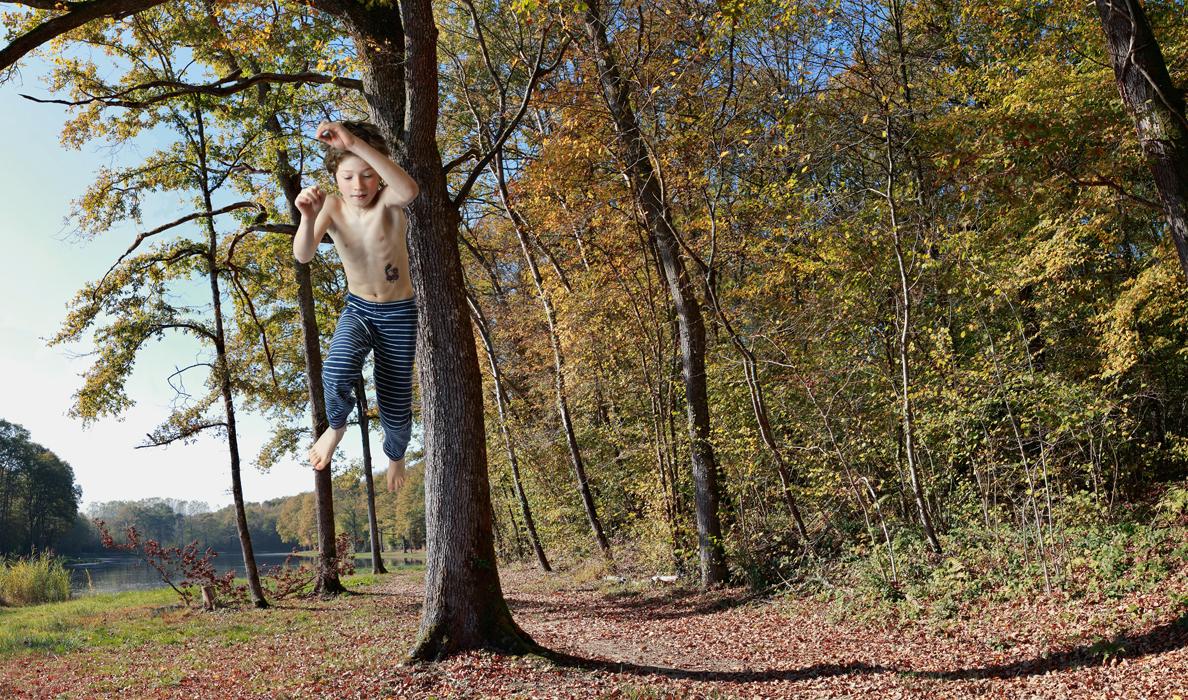

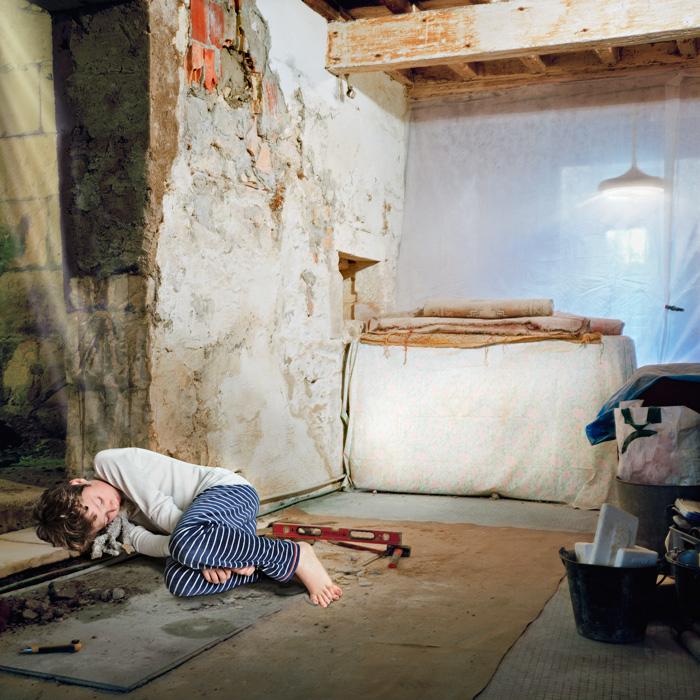
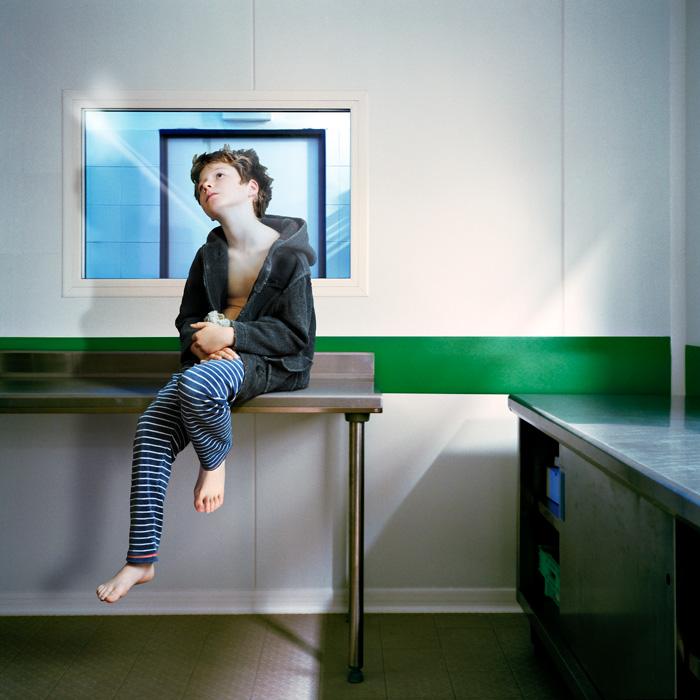
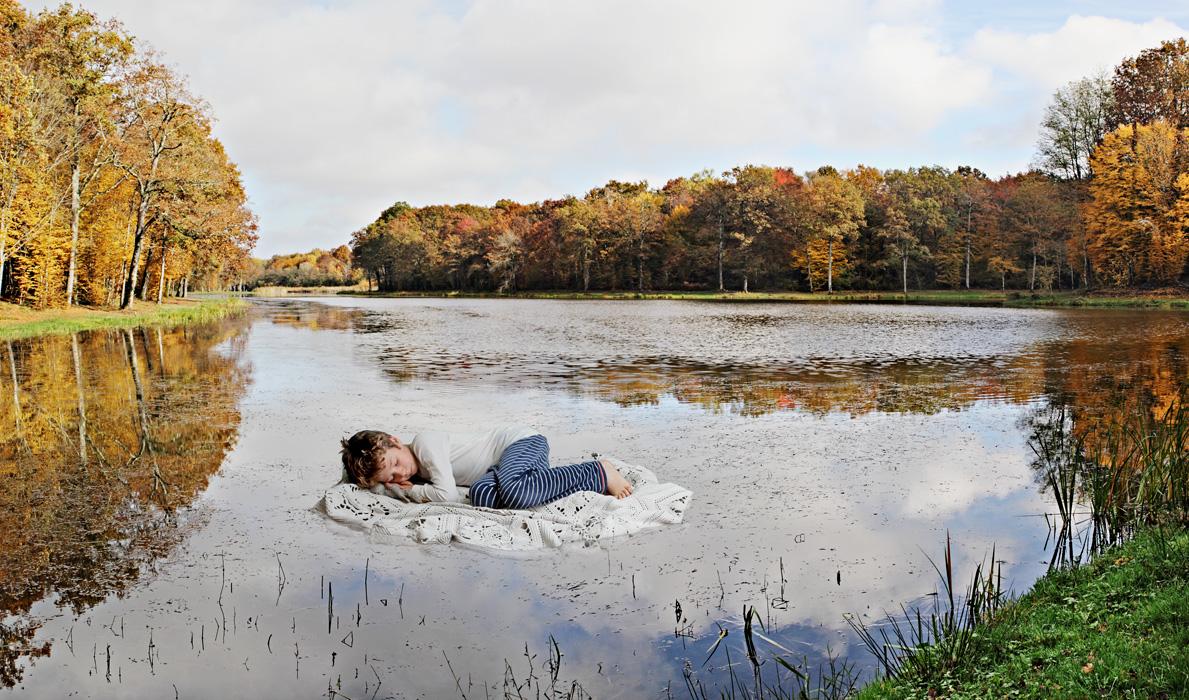
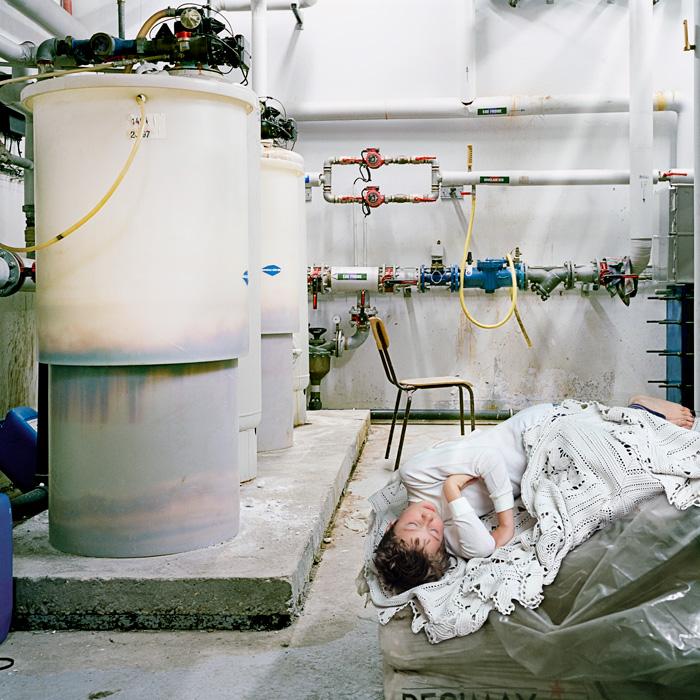
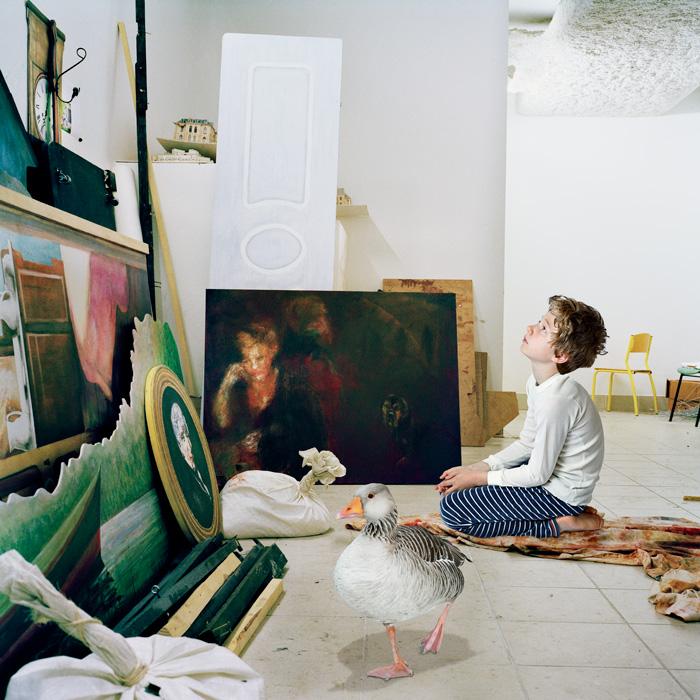
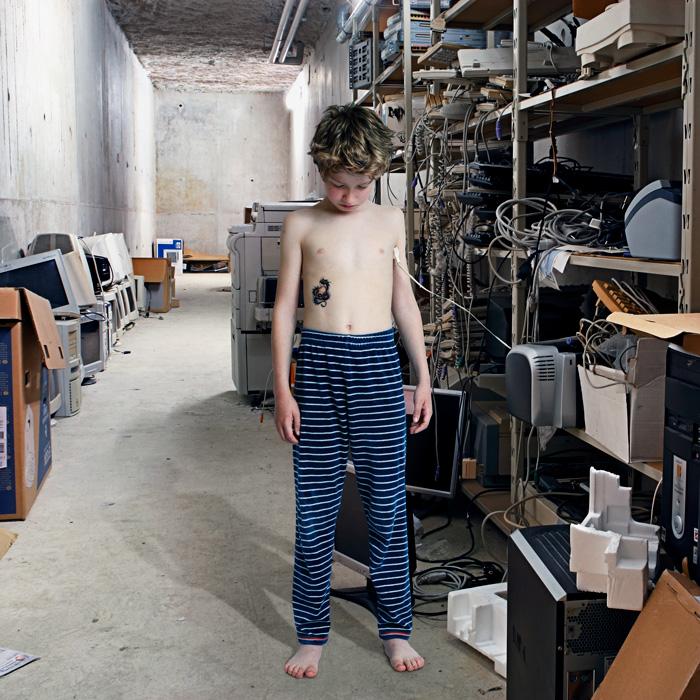
N'existe plus qu'en H30XL30cm / Only yet in H12XL12 inches
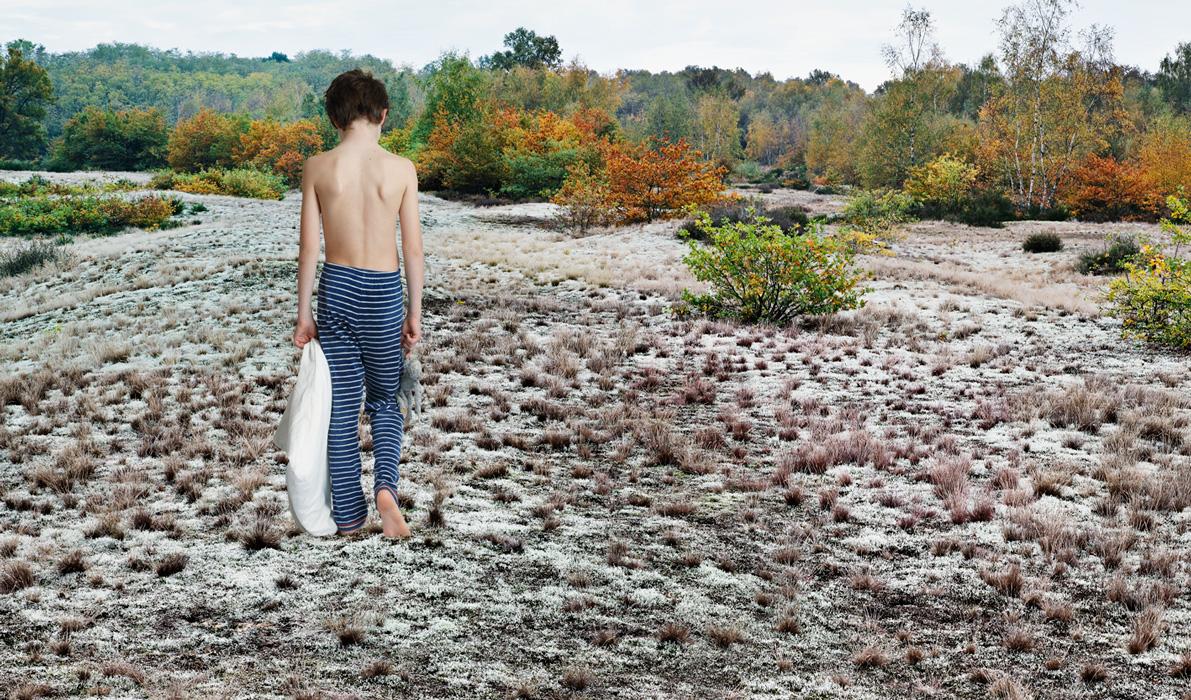
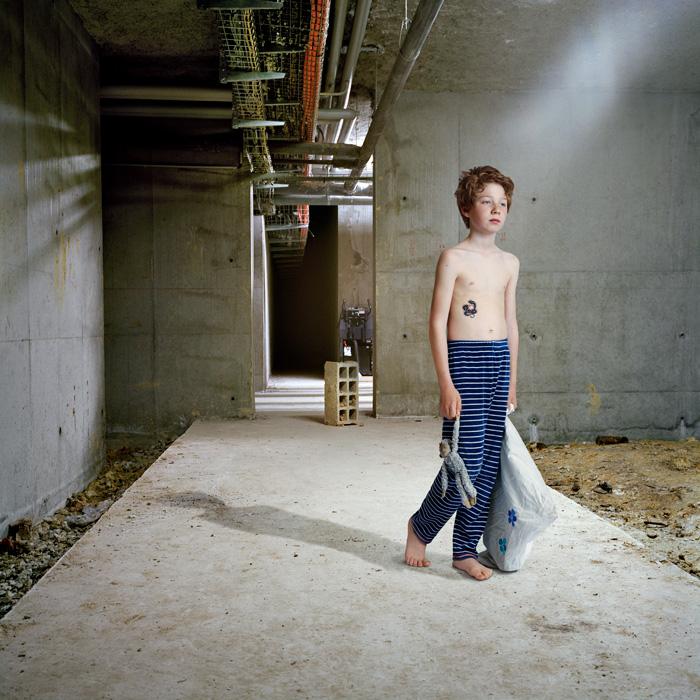
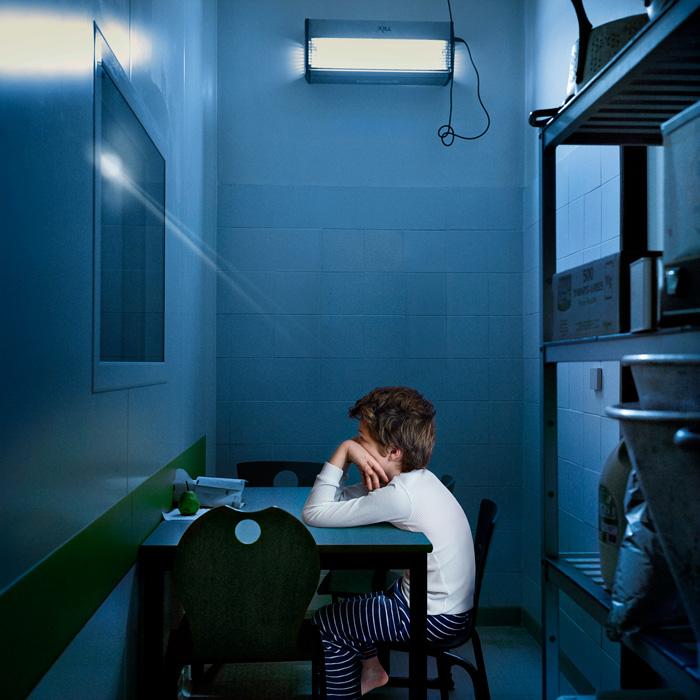
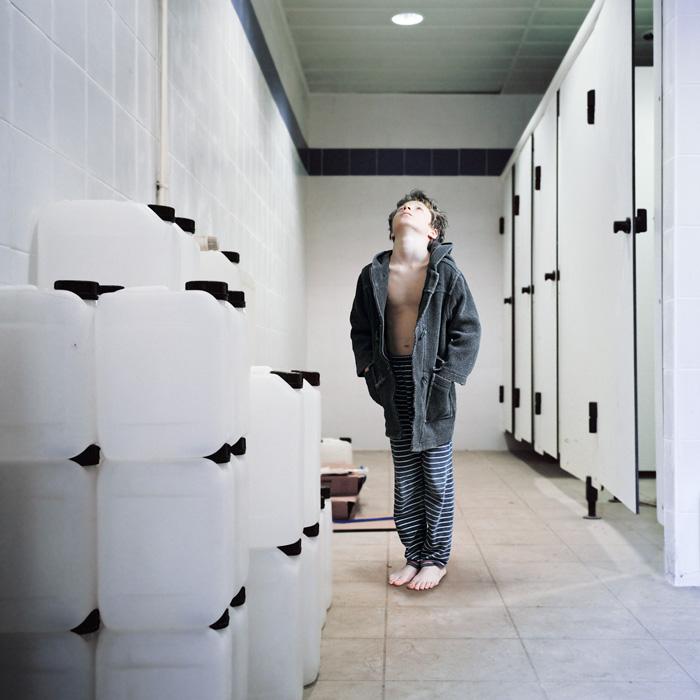
Set of 21 silver color photographs in medium format (120 film size).
Sizes and process:
H 34 X L 34 inches and H 34 X L 58 inches.
Giclée process on Hahnemühle PhotoRag 308g Fine Art paper mounted on museum aluminum Dibond, fitted with an aluminium chassis.
Limited edition of 5.
Price H 34 X L 34 inches: € 3,300 incl. More information.
Price H 34 X L 58 inches : € 3,900 incl. More information.
H 12 X L 12 inches and H12X L20 inches, Giclée process on Hahnemühle PhotoRag 308g Fine Art paper mounted on Dibond, American box frame, H 16 X L 16 inches and H 16 X L 24 inches.
Limited edition of 5.
Price H 12 X L 12 inches: € 1,250 incl. More information.
Price H 12 X L 20 inches : € 1,600 incl. More information.
On a pile of work bags close to the water tanks of a boiler room in an industrial building, a young boy is asleep. Later, he waits in the scullery of a communal kitchen, then resumes his somnambulist walk in the basement of the building.
He has no contact with anyone. Neither adults nor children come across this boy. He roams through the corridors of a seemingly abandoned place, between stacked computers, raw concrete, metal structures and rubble. An uncomfortable and cold decor where only neon lights and LEDs guide the barefooted child.
No worries, no sadness, no feelings appear in the boy’s behaviour. He is below things - beneath social life -invisible, ultimately nonexistent on the surface of the earth.
Sometimes he extracts himself from his underlying universe by projecting himself inside wide panoramic landscapes, this time beyond the real world. He falls into marshes, head first, as if diving into another level, he falls asleep on water using his blanket like the leaves of a water lily, or on the mossy part of a sandy desert, constantly estranged from the world.
The child “un-spatializes” himself in both environments. The first, industrial, is dominated by man but man is no longer in charge.The place is forgotten, disaffected. If you analyse this word from its emotional meaning then, inside this space, the boy will be subjected to no emotions, he can wander around without being affected. The second environment, natural and wild, has not been contaminated by humans. Again, without any interaction, the child can feel protected, and so, passing from one world to another, he can get out of dangerous emotional situations.
Mireille Loup talks here about the "raptus (1)" of a child, those departures out of ordinary consciousness, but also of "polytropic" intelligence (from the Greek, polytropos: several changes / multiple laps), this faculty of polymorphic adaptability that gives the ability to make detours, to wander in a positive way and that Homer used to describe Ulysses, “Ulysses polytropos”, a metaphor of the uncatchable octopus with its thousand folds.
In metric geometry, Beneath-Beyond is the name of one of the algorithms used for representing a set of the points composing a polytope (from the Greek, polytropos, it is a polyhedron generally accepted as convex), that is to say, it produces an equivalence of the representations of the sections and facets that are in front, and of others that are located behind. The Irish mathematician Alicia Boole Stott, who coined the term "polytope" in the late of the 19th century, developed her research on the ability to visualize sections of it in a fourth dimension in our three-dimensional universe.
To understand the dimension 4, it is necessary to disregard the world that we can only see, the one in three dimensions, and imagine another one, to which our eyes and senses do not have access, and that considers the dimension of the hidden facets of the polytope, the representation of which differs, depending on its movement in space (X, Y, Z), that is to say at instant T.
In Beneath/Beyond, Mireille Loup shows us how certain mental algorithms can allow a representation of invisible facets by an ability of adaptability that uses the imagination, the "polytropos", beneath and beyond a perceptible reality.
Inspired by remarkable works dealing with isolation such as The Silence by Ingmar Bergman (film, 1963), the literary trilogy His Dark Materials by Philip Pullman and the short story by Jules Supervielle The child of the High Seas, Mireille Loup had already given us images of the wandering of childhood. One remembers this little girl inside magnified landscapes from her series Esquives, created thirteen years ago (2003-2005), of which two photographs have been acquired by the Fond National d’Art Contemporain (French Contemporary Art Fund). In Esquives, accompanied by a novel of the same name, she told us about the isolation of her own childhood, revisited and sublimated. In Beneath / Beyond (2), she invites us into the "polytropic" interiority of her son, who asked her to appear in these images, and conveys again the feeling of being estranged from the world, as if history was endlessly replayed.
When we are children, how can we talk about ourselves when we do not have the words? At least, there are images. For children, drawings. For Mireille Loup, constructed and manipulated photographs used as drawings to express the unspeakable, to highlight what is not seen, without emotion, without drama but in a sanitized aesthetics that can talk to many of us.
Translation: Janine Lajudie.
(1) Psychoanalytical term from the 19th century, a “raptus” is a strong perturbation of consciousness, a powerful force affecting behaviour. Madame Von Breuning often studied the “raptus” of Ludwig von Beethoven, these « departures from ordinary consciousness » that had affected the compositor since adolescence. Many writers speak about these trance-like feelings, these sudden and momentary desertions from the prosaic world.
(2) Artist residency in the Lycée International de Luynes (Aix-en-Provence) with a grant from the Ministry of Culture during Marseille-Provence 2013 for the creation of photographic decors.
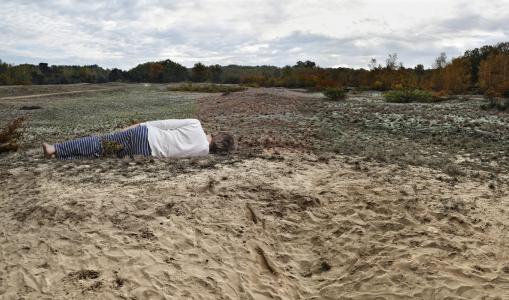
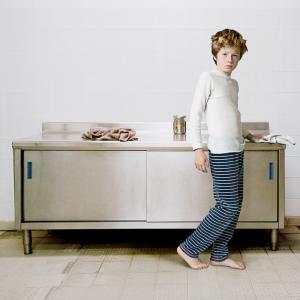
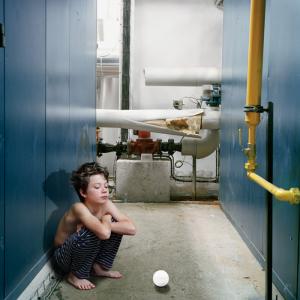


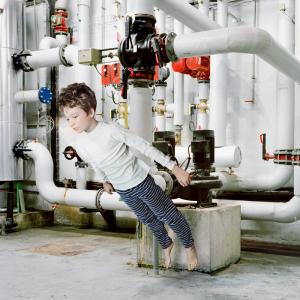

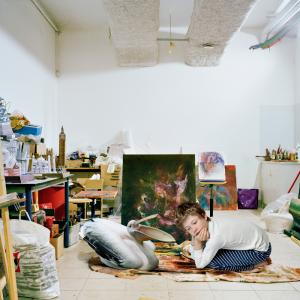
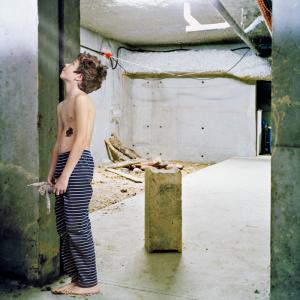
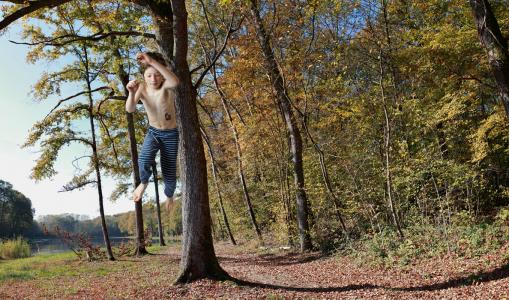
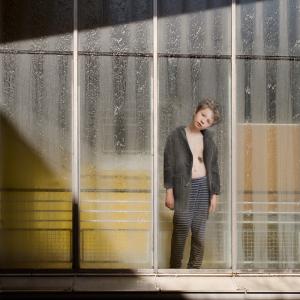
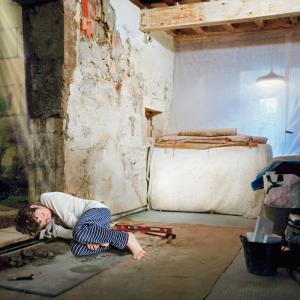
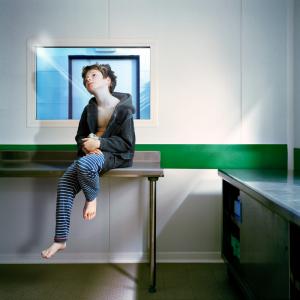
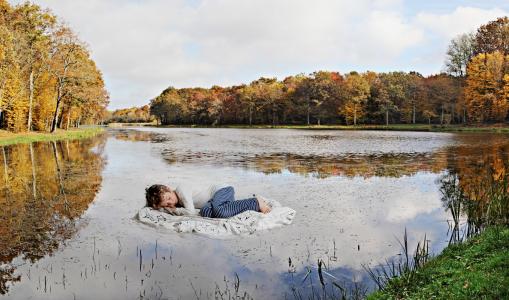
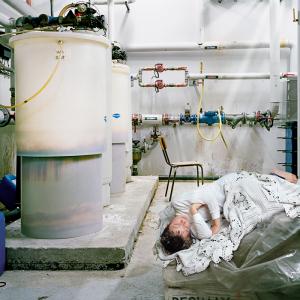
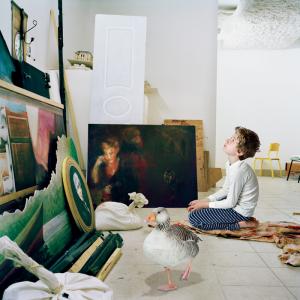
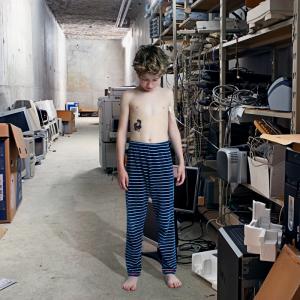
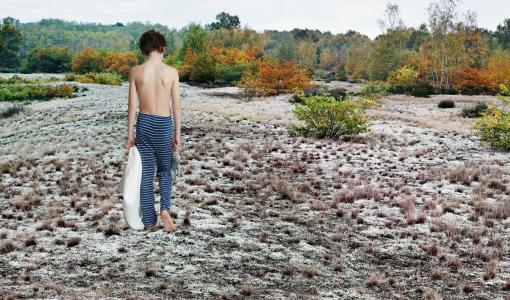
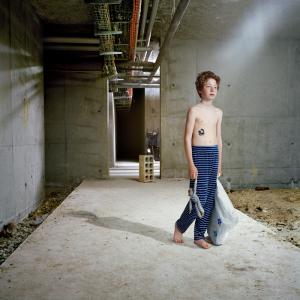
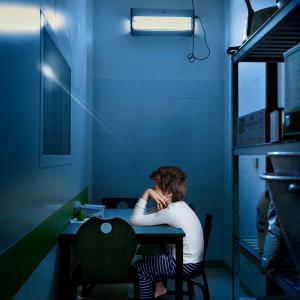
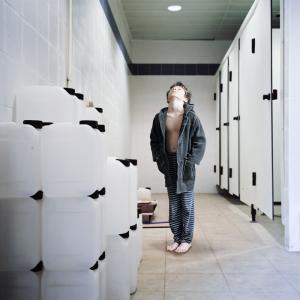






















N'existe plus qu'en H30XL30cm / Only yet in H12XL12 inches